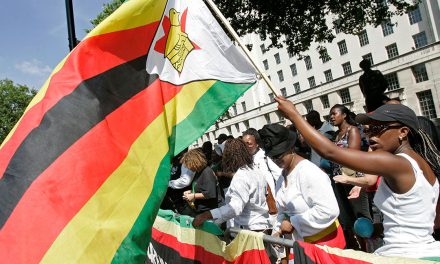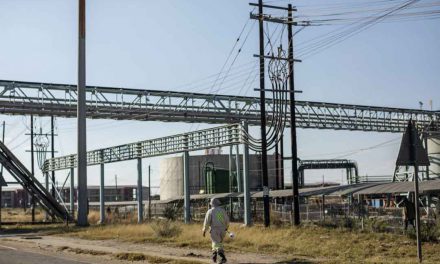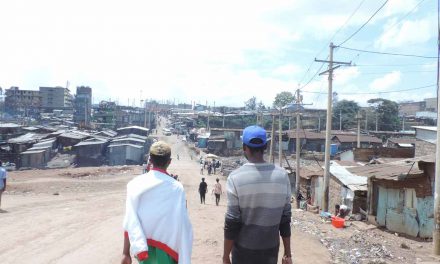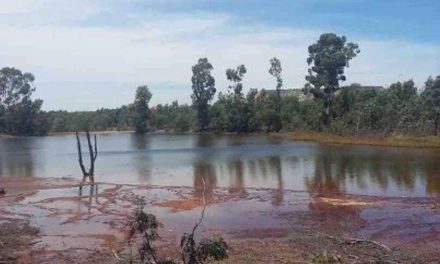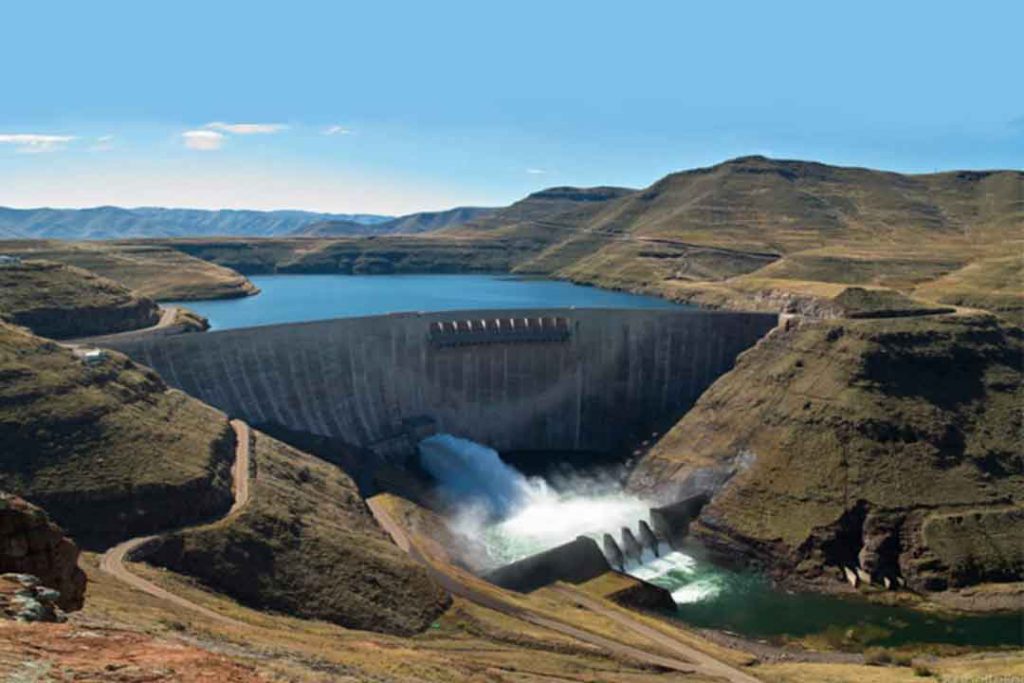
Lesotho exports water to South Africa at the same time as it imports the bottled product from its larger neighbour – and rural communities are forced to drink from unprotected sources
Although Lesotho is a regional water supplier, years of political and institutional incompetence and mismanagement have left citizens in rural and peri-urban areas without access to clean and safe drinking water. Many of the country’s citizens living in rural areas still draw drinking water from unprotected springs and wells, while those in peri-urban communities where piped water systems do exist, experience frequent water scarcity.
This, despite the fact that the country annually exports an estimated 780 million cubic metres of clean water to neighbouring South Africa under the Lesotho Highlands Water Project (LHWP) programme – a bi-national project entered into by the two countries in 1986.
The first phase of this agreement saw water transferred to South Africa to address shortages there, contributing some 3% of Lesotho’s GDP as well as generating hydroelectric power for the kingdom. “The project was developed as the least-cost option to secure water for more than 12 million people in the dry Gauteng Province, which generates more than 40% of South Africa’s GDP,” says a 2016 World Bank report.
The second phase, the 163.5m high Polihali Dam, is expected to start transferring water to South Africa towards the end of 2025. However, Refiloe Tlali, the chief executive officer of the Lesotho Highlands Development Authority (LHDA), expects the collection of water into the dam to take place as early as 2023.
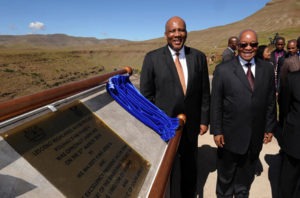
Lesotho’s King Letsie lll and South African President Jacob Zuma launch phase ll of the LHWP at Polihali, Lesotho, 2014
© GCIS
Meanwhile, 16-year-old Kabelo Mabusa, who lives in Ha-Rajoko, a small rural village at Mazenod, 20 km from the capital Maseru and which grapples with sporadic, acute water shortages, is forced to draw water from an unprotected well. He scoops the last cupfuls to fill up a bucket he is taking home.
“This is the only option we have,” Mabusa says as he draws muddy water from the well. “We use water drawn from this well for drinking and washing clothes.” The lower the well gets the filthier the water becomes, but he and his family, and indeed the village, use it nonetheless.
The open well is located in a deep gorge with a stream that runs to the village’s small river. The gorge separates the village from the urban parts of Mazenod, where a reliable piped water system supplies industrial and domestic water drawn from the newly built Metolong Dam.
The Metolong Dam was initiated to supply bulk industrial and domestic water to Maseru and the lowland towns of Roma, Mazenod, Morija and Teyateyaneng. Together, they receive a daily average of 75,000 cubic metres of treated water for domestic and industrial use.
The M4.5 billion (about $330,890,085) project has seen the construction of tertiary pipelines, including the installation of branches and take-offs at certain points along the pipeline to enable future distribution of potable water to surrounding communities. But Mabusa and fellow residents at Ha-Rajoko remain without clean water and continue to share a well with their livestock. During rainy season, human waste from upstream is washed into this, their sole water source.
“We used to have the luxury of a borehole here, even though it was not a reliable source of water … We had to queue for hours to get water, or else wake up very early in the morning,” Mabusa says. However, the borehole taps no longer work.
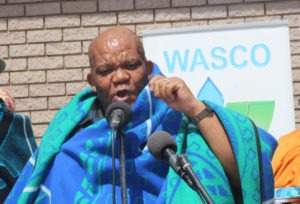
WASCO CEO, Lehlohonolo Manamolela Image supplied
Water and Sewerage Company (WASCO) chief executive officer Lehlohonolo Manamolela acknowledges the “mammoth challenges” that remain in ensuring local communities receive supplies of clean water as per international standards. Unprecedented migration to urban centres and “limited financial resources” were the major problems, Manamolela told Africa in Fact. WASCO is a state-owned enterprise, with 100% government ownership.
“We have plans at hand to broaden supply, but due to the scary increase in the numbers of people making up peri-urban communities, by the time we secure resources, the number of people in need of water has usually escalated,” said Manamolela. He indicated the company was “doing its utmost” to persuade government to increase WASCO’s budget to enable the company to meet the growing demand for water.
Meanwhile, improving citizens’ access to clean water remains a government aim. On September 13, 2017, Minister of Water Samonyane Ntsekele launched the construction of a reservoir to service the water needs of around 11,949 people living in Ha Makhalanyane, about 22 km south of Maseru, and neighbouring villages. At the event, Ntsekele said the government was committed to extending the clean water supply to all urban, peri-urban and rural communities across the country.
An elderly 73-year-old resident in neighbouring Ha Motloheloa, Tefelo Ramataboee, told Africa in Fact his community had been elated to receive clean drinking water. It had always “irked” him that Lesotho was the “water engine” of the southern Africa region, selling water to South Africa, while its own people did not have enough water. He added that he hoped similar projects would bring water to the entire country.
But the status quo remains. Most of Lesotho’s water still goes to South Africa, either piped or in bottles that are sold in that country’s main supermarkets – and also in branches of the same supermarket chains in Lesotho. Water is one of Lesotho’s seven main imports – the others include poultry products, mutton, beef, vegetables and fruit. Lesotho imports M69.3 million (about $5,097,656) worth of bottled water a year.
According to the LHDA’s water-sale exports report of June 2017, the country received some M837.7 million ($59.43 million) in royalties from water and electricity exports to South Africa in 2016 alone. Yet M63.9 million ($4.53 million), or 7.63% of that total, was spent on importing the same water in bottled form.
According to local economic commentators, bottled water imports also expose Lesotho’s nascent producers to stiff competition from well-off South African companies. Disgruntled by this situation, a local body, the Home of Aggressive Entrepreneurs Lesotho, in 2016 began calling on the ministry of small business development to ban the import of certain foodstuffs, including water.
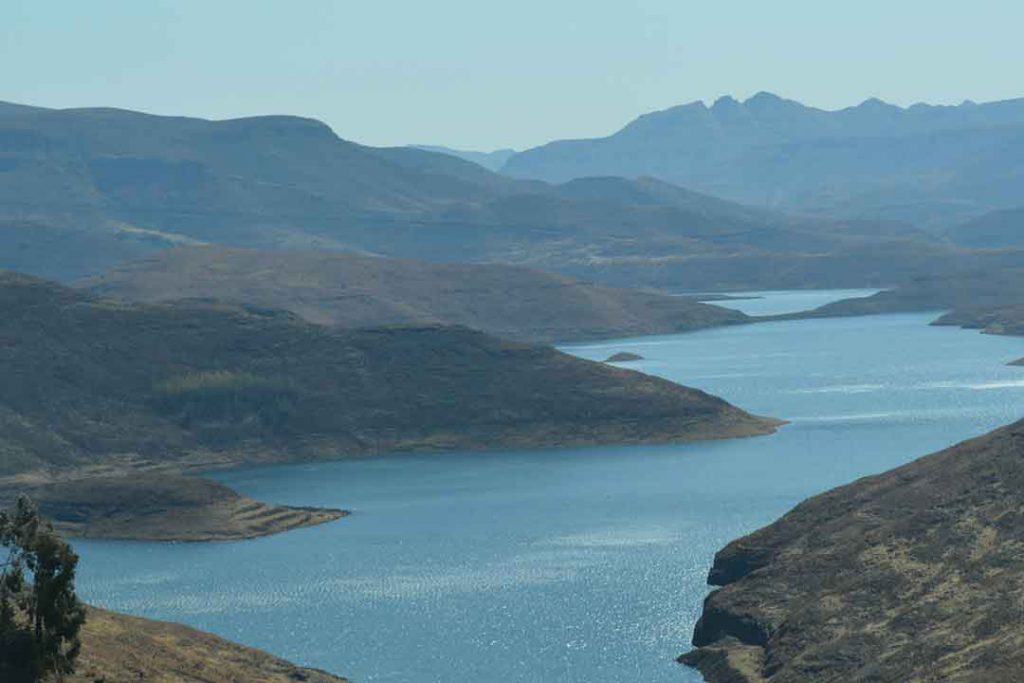
The then minister, Selibe Mochoboroane, said he would heed the call, but did not make any substantial changes before he was removed from the ministry and Lesotho’s 2015-17 coalition government collapsed before its plan to ban the procurement of South African bottled water could be put into effect.
Mochoboroane had gone on record as saying that, “the Basotho produced bottled water of their own”, and that the country needed to “explore ways of reducing water imports from South Africa”. Chalane Phori, the incumbent minister under the new government told Africa in Fact that the ministry was at “an advanced stage and making meaningful progress towards” defending local producers from foreign competition.
In his two months in office, Phori said he had already met with water bottlers and their stakeholder associations and they were currently drafting laws to regulate operations. He added that government was “profiling companies” in a bid to begin controlling water imports into Lesotho.
However, Phori highlighted the need for a bureau of standards to meet commercial, health and other requirements, as there was presently no such institution in the country. “I have already taken this matter up with the ministry of trade to fast track the establishment of a bureau of standards in Lesotho,” he said. “We cannot be a country that produces water and at the same time imports water. If there is no law to this effect, then it is my responsibility to ensure that the law is enacted.”
As things stand, Lesotho possesses abundant water resources, far above national requirement. According to a Water Technology report, Lesotho’s total water consumption is about 2m³/s (cubic metres per second), while the total availability of water is about 150m³/s. Most of this water flows untapped down the Senqu/Orange River through South Africa and into the Atlantic Ocean.
A 2017 Future Directions International report calls for a re-evaluation of the Lesotho and South Africa agreement. “Many Lesotho citizens,” it says, “lack the same fresh water security guarantees that their own government effectively provides to the citizens of its larger neighbour”.


